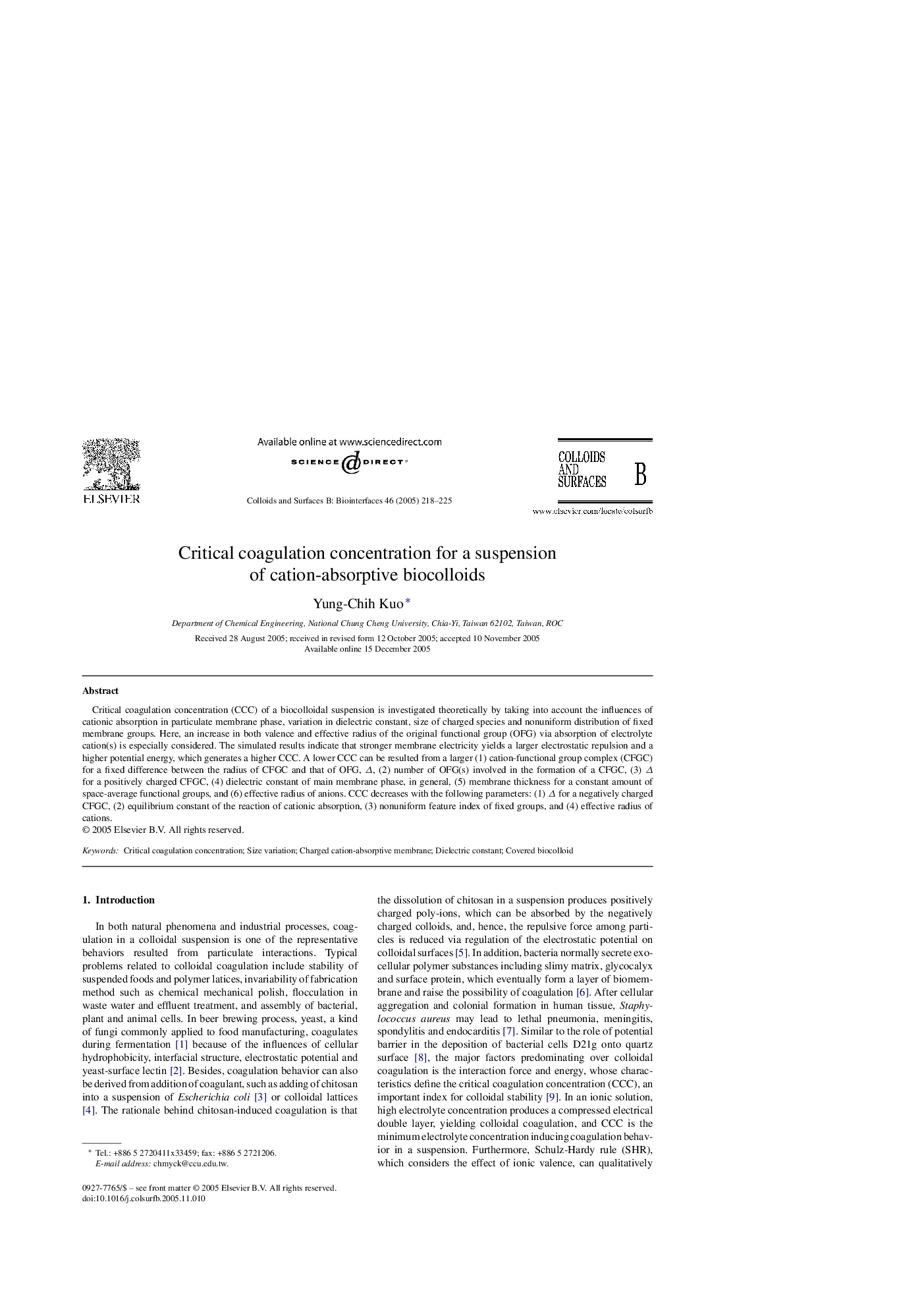| Article ID | Journal | Published Year | Pages | File Type |
|---|---|---|---|---|
| 10374913 | Colloids and Surfaces B: Biointerfaces | 2005 | 8 Pages |
Abstract
Critical coagulation concentration (CCC) of a biocolloidal suspension is investigated theoretically by taking into account the influences of cationic absorption in particulate membrane phase, variation in dielectric constant, size of charged species and nonuniform distribution of fixed membrane groups. Here, an increase in both valence and effective radius of the original functional group (OFG) via absorption of electrolyte cation(s) is especially considered. The simulated results indicate that stronger membrane electricity yields a larger electrostatic repulsion and a higher potential energy, which generates a higher CCC. A lower CCC can be resulted from a larger (1) cation-functional group complex (CFGC) for a fixed difference between the radius of CFGC and that of OFG, Î, (2) number of OFG(s) involved in the formation of a CFGC, (3) Î for a positively charged CFGC, (4) dielectric constant of main membrane phase, in general, (5) membrane thickness for a constant amount of space-average functional groups, and (6) effective radius of anions. CCC decreases with the following parameters: (1) Î for a negatively charged CFGC, (2) equilibrium constant of the reaction of cationic absorption, (3) nonuniform feature index of fixed groups, and (4) effective radius of cations.
Related Topics
Physical Sciences and Engineering
Chemical Engineering
Colloid and Surface Chemistry
Authors
Yung-Chih Kuo,
